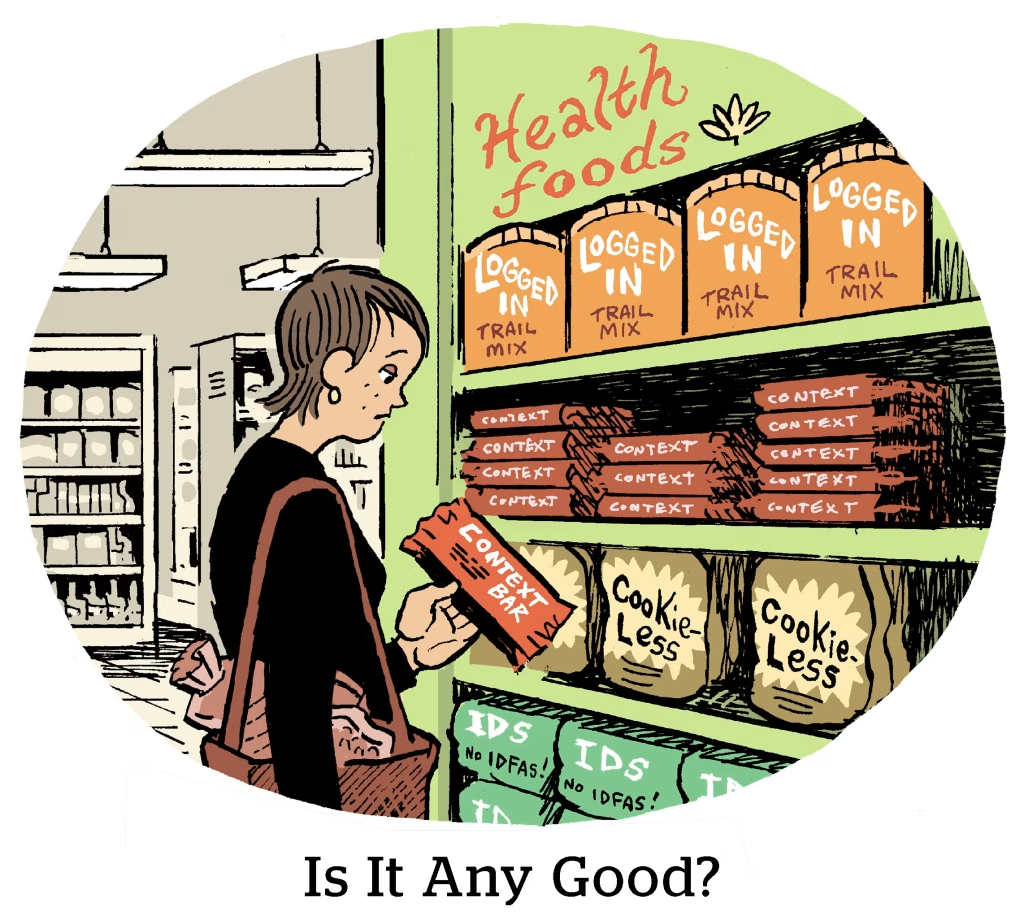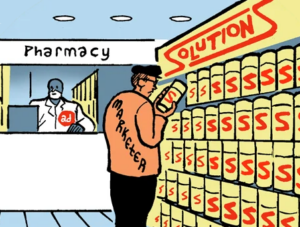For major consumer brands, it has long been true that product prices and marketing budgets are flip sides of the same coin.
How do you move something off the shelf? Most likely, spend another dollar on ads or knock a buck off the price.
Household name brands like Church & Dwight also often peg their marketing budgets to sales. The company’s ad budgets ping around over the course of the year, CFO Lee McChesney said on the company’s earnings report earlier this month. But C&D’s “evergreen” approach is for marketing to account for 11% of net sales.
The same is largely true for other CPG manufacturers.
But the phase-in effects of tariffs, combined with vicissitudes of global weather and commodity production, have thrown those standards for a loop.
Based on recent earnings reports from major brands and retailers, and conversations with CPG and grocery marketing execs, marketing spend is going to be flattened even as prices go up considerably.
One major CPG marketer who requested anonymity to discuss internal plans said the company will decrease its long-held percent-of-sales metric for advertising. “Costs will be higher; prices will be higher; marketing must do more with less,” they said.
Follow the profit
Brands are often seen as chasing consumer trends. But brands can also force a consumer trend along by diverting ad investments.
For example, one of the fastest-growing categories in the entire grocery store, per Circana’s food and beverage industry ratings, is Non-Chocolate Candy. It’s now in the top 10, trailing Dairy Milk, Fresh Eggs and Fresh Bread & Rolls.
That growth is powered by the newfound popularity of gummy candies.
One executive at the candy company Ferrara noted to me last year that its Nerds Gummy Clusters, a runaway hit in the past few years, saw massive marketing investments, including back-to-back Super Bowl spots, partly because its profile as a gummy product makes it a far more profitable sale than the chocolate products the company is known for.
The early data on Nerds Gummy Clusters was actually pessimistic, the same exec said. If the product contained chocolate and had the same inflationary cost picture, it would have been discontinued, they said. Ferrara pushed harder on the marketing because the product’s margins were so attractive, and as cocoa prices went up even more, the Gummy Clusters were rewarded with Super Bowl ads.
From the mid-1970s until mid-2023, cocoa prices remained within a relatively narrow pricing band of $2,000 to $3,000 per ton. Poor cocoa harvest seasons in west Africa, where the majority of the world’s cocoa is grown, plus tariff and macroeconomic challenges, have pushed the price of cocoa between $8,000 and $12,000 per ton since 2024.
More so perhaps than chasing consumer tastes, it’s the divergent profit margins that have forced candy companies to advertise behind new product types.
On Hershey’s earnings report three weeks ago, CFO Steve Voskuil said that price increases would be insufficient to cover the inflationary costs of cocoa. “We’re going to continue to look at all of those levers to extract more cost savings and margin points.”
That sounds ominous. Although he noted that in the next year Hershey’s has an Olympic sponsorship and a biographical film, “Hershey,” about the founder in the works.
“We feel like those will be fully funded,” he added – somehow even more ominously.
CEO Michele Gross Buck noted later that the company has “dialed up the marketing” with its non-chocolate portfolio, including Dot’s pretzels and SkinnyPop popcorn.
Coffee is another key commodity with rocketing costs. Which is partly why an incumbent like Keurig Dr Pepper has seen coffee sales decline year over year, per its earnings report last month. And it’s also why KDRP, as the beverage company is known, will spend much more to market its new energy drink lines like Ghost.
Find marketing elsewhere
The trend of product price increases and marketing decreases goes beyond food and beverage.
Procter & Gamble, the world’s biggest CPG brand, will be leveling off its paid media after years of steady increases even if tariffs and other costs drive up prices, CFO Andre Schulten told investors earlier this year. The company will lean more on packaging and R&D, rather than paid media, he added. The company’s new star products include Charmin toilet paper with scalloped edges, Old Spice deodorant for one’s crotch, a new Oral-B toothbrush that reports toothbrushing data back to the user and Tide laundry detergent that comes in woven fiber tiles.
These products rely more on novelty and innovation than paid media reach and frequency.
And good thing, too, because P&G announced this year that it plans to identify $500 million to $700 million in annual savings from the marketing budget moving forward.
On the innovation front, brands are more likely to turn to pricing tactics, rather than marketing investments. For example, the FTC shut down a preexisting initiative meant to better understand and regulate dynamic or personalized pricing (what the FTC dubbed “surveillance pricing,” because it’s based on historical knowledge of someone’s purchases or online habits).
Brands are already reinvesting in targeted pricing to pad their sales margins.
The effect can also be seen in The Trade Desk’s earnings. The biggest ad platforms – Google, Meta and Amazon, namely – have millions of advertisers, most of which are small businesses. But Fortune 1,000 brands are facing much more complicated forces that constrain their ad budgets right now.
“By the way,” Trade Desk CEO Jeff Green told investors this month, “this fact that we concentrate on the large ones is not generally a negative. It is almost always a positive.”
However, “just in this moment, it’s negative,” Green acknowledged, “because of how uniquely they’re being affected by the tariffs and related policies.”
Hopefully, it is just this moment. Otherwise, the ad industry will be in for a rough year or more.














